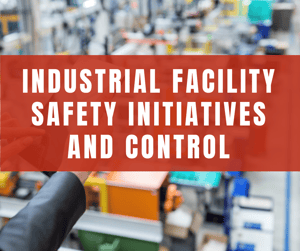-Aug-06-2023-08-50-01-6918-PM.png?width=300&name=ACD%20Template%20(12)-Aug-06-2023-08-50-01-6918-PM.png) For operators working in an automated environment, safety is dependent on two core factors. Firstly, the safety layers that a process has been embedded with, and secondly, the operator’s own knowledge regarding the workings of the process and how to manage it during abnormal states. Control systems have evolved greatly, incorporating multiple layers of automated safety within them that act as barriers to accident prevention at different scales. Nonetheless, the risk always remains and therefore efforts should be made to minimize its occurrence.
For operators working in an automated environment, safety is dependent on two core factors. Firstly, the safety layers that a process has been embedded with, and secondly, the operator’s own knowledge regarding the workings of the process and how to manage it during abnormal states. Control systems have evolved greatly, incorporating multiple layers of automated safety within them that act as barriers to accident prevention at different scales. Nonetheless, the risk always remains and therefore efforts should be made to minimize its occurrence.
Layering Risk Reduction
A Basic Process Control System or BPCS is always designed in a manner that it reduces the hazards, either through built-in safeguards or external protection layers. In addition to ensuring that the primary process is carried out correctly, the BPCS has to ensure that operators are safe, by utilizing Independent Protection Layers (IPLs). Out-of-range measurements are set during design-time, which are identified and during onset notified through alarms or a physical response.
A Process Hazard Analysis and Operability study or a similar audit can be performed to determine any remaining risks that may pose a threat to operators’ safety. Next, a Safety Instrumented System (SIS) layer is designed with the aim of minimizing the risks identified during the audit, the importance of which increases in magnitude as the BPCS ages or new operators take over from an experienced crop.
Neither does the presence of a SIS layer neutralize the need for monitoring and maintaining safety systems, nor does it eliminate the duties of on-site personnel. A level equivalent to 100% failsafe is nearly impossible to achieve.
Awareness
Complacency can ruin process operations, period. There is no proper way to tackle this issue other than by promoting a healthy work culture that is based on working hard to keep safety policies ingrained within operations. As a rule of thumb, inquire about the following from an operator to determine their level of preparedness:
Some systems deliberately burden users with excess data that encapsulates true safety risks. For instance, HMI screens that were designed decades ago may use inconsistent color schemes that make it easy for the operator to skip a vital bit of data. This may lead to a long-term effect, which may keep adding risk to the system until it is rectified.
Well-trained operators are they key to taking advantage of the automated safety functions incorporated within the SIS and BPCS. Even if the BPCS and SIS are designed to a near fool-proof level, they won’t do the facility any good if the workforce isn’t trained to deal with the threats. Furthermore, automated functions may prevent damage to personnel and equipment during abnormal operation, but the ability to detect such conditions beforehand can prevent interruptions and thus improve the plant floor’s uptime.
Interested in learning more, connect with an ACD expert!
You may also be interested in reading:


